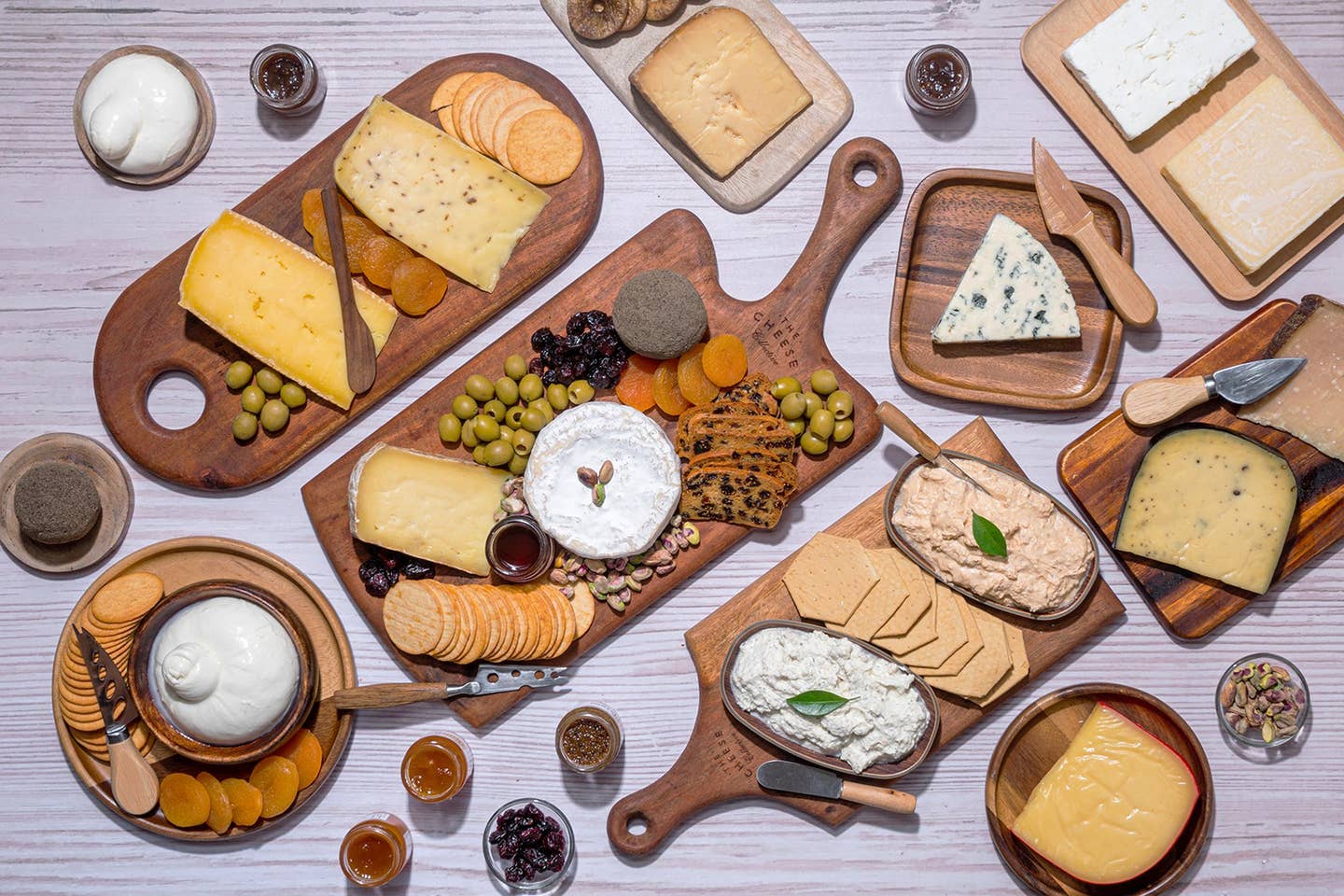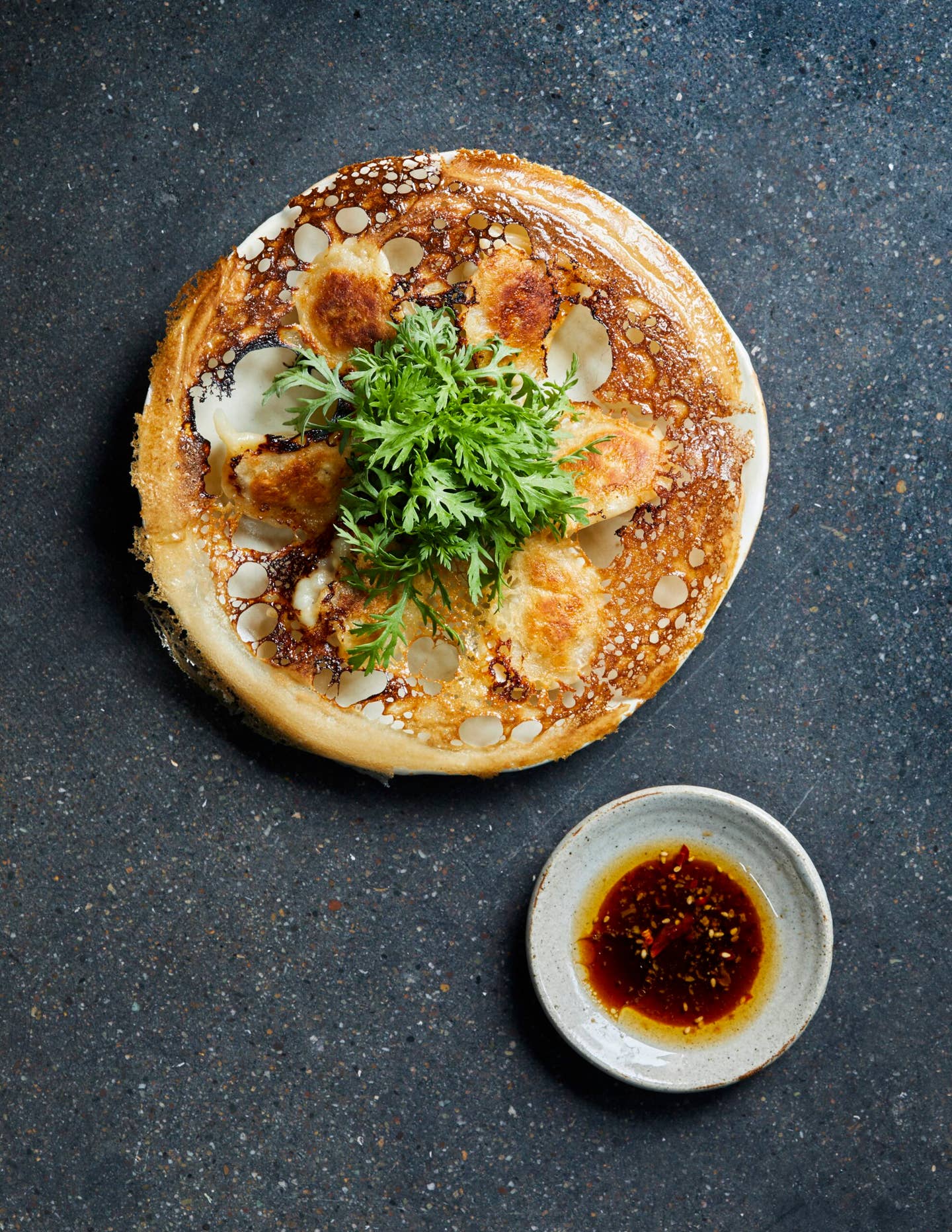
The World’s Largest Milk Producer Is Now A Hot Spot For Artisan Cheese
Tastemakers are infusing cheese with local spices and serving them alongside kulcha, foogath, and chutneys.
Shubham Rathi opened the doors to Meltish - The Cheese Cafe in Pune, India in March 2021 and was pleasantly surprised when patrons arrived in droves to buy cheese platters for Diwali celebrations. He had not expected this kind of response from customers who were largely hesitant about cheese consumption until the latter half of the last century. Though India has reigned supreme as the world’s largest producer of milk since 1998, the country is not widely known as a cheese-making nation; paneer, a fresh creamy cottage cheese, is perhaps the only variety consumed universally by people all across the subcontinent.
India has a rather complex history with dairy, one riddled with layers of convoluted cultural and religious ideologies, as well as foreign influences and colonization. According to the Vedas, ancient Hindu scriptures, milk is considered pure and holy; hence, the curdling of milk (an essential step in producing cheese) is believed to be a bad omen. So it followed that any subsequent products made from that milk were considered impure, and unworthy of offering to the Hindu gods for special occasions. The tropical climate, lack of refrigeration systems in earlier times, and negative connotations around souring milk all further impeded the development of cheesemaking.
Against these odds, India does have a handful of indigenous cheeses to its credit, such as Bandel, a salt-cured and smoked cheese; chhurpi, a hard cheese made from the milk of a chauri (a cross between a male yak and a cow); and kalari, a stretchy cheese indigenous to Jammu and Kashmir. These cheeses are relished mostly by the locals of their originating regions.
When Amul, an Indian dairy cooperative, introduced budget-friendly processed cheeses around the country in the 1960s, Indians began using these products to make sandwiches, pizza, and pasta. In the last decade, Indians have become increasingly interested in experimenting with more diverse varieties of cheese—and a new breed of artisan cheesemakers is emerging to meet the demand.
One factor driving this growing interest is overseas travel, which is encouraging more people to explore different cuisines and dishes. "People who have lived abroad or traveled overseas want to connect with the cheese again," says Mansi Jasani, a cheesemaker and cheesemonger at The Cheese Collective in Mumbai. "Indians who have not traveled abroad, but have gotten exposed to [artisan cheese] through social media, are also eager to try it." In addition, health-conscious households are increasingly interested in consuming preservative-free, unprocessed food. The COVID-19 pandemic further propelled the demand for handcrafted cheese; Indians holed up at home tried to replicate restaurant-like food in their own kitchens, and cheesemakers pivoted their businesses to accommodate them.
"Before the pandemic, we were supplying only to restaurants and hotels. But during the pandemic, when we adopted a direct-to-consumer business model and started selling through our website, the response was phenomenal,” says Mausam Jotwani, cheesemaker and founder of Eleftheria Cheese.
Experimental Indian chefs are further bolstering this surge of interest by using artisan cheese in their restaurant kitchens. "As restaurateurs and chefs, we must support the ecosystem we work in," explains Hussain Shahzad, executive chef at The Bombay Canteen and O Pedro restaurants in Mumbai. "The cheesemakers are doing some great work, and we are trying to add value to what they have already produced." Shazad’s menu features dishes like sweet and creamy stracciatella served atop the Indian winter delicacy nimona kulcha (a green pea Indian flat bread), as well as a creamy carrot puree inspired by Goa-style carrot foogath (a dish of finely chopped carrots) that is layered with burrata.
The restaurant Masque in Mumbai is also showcasing India’s domestic cheeses, primarily kalari, through its creative tasting menu. "People outside Kashmir are excited and curious to know about it as they do not regularly eat these dishes," says Prateek Sadhu, executive chef and co-owner of Masque. He serves his guests kalari kulcha, a street food from Jammu that involves grilling the kalari and stuffing it between Kashmiri bread rolls before slathering with walnut and chile chutneys. He also makes finger millet tacos with grated Bandel cheese, served alongside chutneys and salad.
Across India, artisan cheesemakers are handcrafting products that rival their European counterparts. "We noticed our consumers purchase almost twice a week, so it was clear that we needed to offer new cheeses and flavors," says Shruti Golchha, of Bengaluru-based Begum Victoria. "We quickly worked on introducing fresh and soft cheeses, as these have a shorter aging process, thus allowing us to test in small batches and pivot according to feedback received from customers." Golchha notes that their brie in particular is an all-time favorite among patrons.
While Begum Victoria uses only milk sourced from a farm that breeds Hallikar cows, an indigenous breed famed for its high-grade milk, The Farm at Chennai raises its own livestock to ensure top-notch quality control. The Farm produces various cheeses, including the best-selling Tomme de Semmancheri—inspired by France’s Tomme de Savoie, but with added piquancy. At Himalayan Cheese in Pahalgam in Kashmir, Chris Zandee from the Netherlands has worked closely with the pastoral semi-nomadic Gujjar community and local Kashmiri farmers since 2006. "I wanted to empower the local farmers," says Zandee, who decided to join forces with them after taking part in relief work following the 2005 Kashmir earthquake. "I realized the need for the farmers to benefit from the cheese market that was very niche and expensive [rather than leaving profits to the middle-men]." Today, he engages with them by helping them take care of their cattle to ensure a better yield. While he makes a wide variety of cheeses—including gouda, gruyere, cheddar, and mozzarella—his kalari has sold particularly well across India.
As for Jotwani of Eleftheria Cheese, she started her business with fresh cheeses like mozzarella, ricotta, burrata, and stracciatella. Later, she also began making Brunost (Norwegian-style whey cheese), halloumi, and Belper Knolle infused with crushed garlic and Kerala black pepper. She supplies her products to high-end restaurants, pizzerias, and Italian restaurants in Mumbai.
Other makers even incorporate traditional Indian flavors into their cheeses—for example, Chennai-based Käse offers an aged cheddar rubbed with podi masala (a spice mix that includes chana dal, urad dal, and dried chiles). In the Kumaon hills of Uttarakhand, Darima produces a nutty Zarai cheese infused with locally sourced spices. Instead of using Herbs de Provence in her cabecou, Jasani of The Cheese Collective adds complexity to the cheese’s flavor with a dash of coriander- and cumin-scented pav bhaji masala.
The hard work of artisan cheesemakers in India has not gone unnoticed. At the 2021 World Cheese Awards, Eleftheria Cheese won a silver medal for its Brunost, likened to a salted caramel milk fudge. This was the first time that an Indian contender entered the contest. The event also saw Jasani take the stage as the first Indian judge, thus paving the way for greater Indian representation on the world cheese map.
These cheesemakers not only produce cheese, but also educate consumers on the fundamentals of their craft. Jasani conducts guided tasting and pairing sessions and platter-arranging workshops. After all, the demand for artisan cheese has made cheese platters popular at special occasions like birthdays, corporate events, baby showers, and weddings.
For these dairy alchemists creating magic in their creameries, the path to global consumption has its difficulties. The expensive prices and limited availability of cold chain logistics make it difficult to transport cheese throughout the country. Sourcing unadulterated milk and educating farmers to avoid injecting their cattle with hormones and antibiotics continue to pose challenges. But despite these issues, artisans are on a mission to make and showcase high-grade Indian cheeses to the world. "The world needs to know about Indian cheeses,” says Zandee. “They should be celebrated."
Keep Reading
Continue to Next Story










